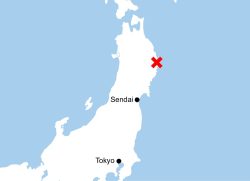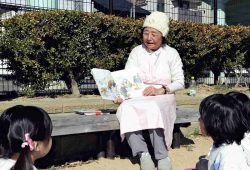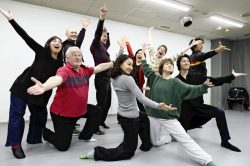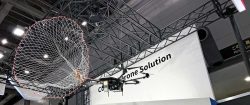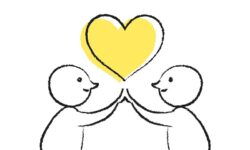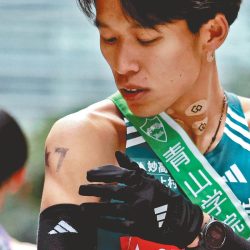Nagasaki Photos Taken Day After A-bombing Discovered Among Items Bought by Japanese Man at U.S. Auction

People carry the injured as they walk along the railway tracks near Nagasaki Station.
13:56 JST, June 12, 2024
Photographs that captured the devastation of Nagasaki on Aug. 10, 1945 — the day after the atomic bombing — were bought at an auction four years ago in the United States, it was recently learned. The photos were taken by Yosuke Yamahata (1917-1966), a press photographer for the Imperial Japanese Army.
The collection of 23 photos includes one that strongly indicates that two other images, previously thought to be separate, were cropped from a single frame. Yamahata’s 77-year-old eldest son, Shogo, who manages his father’s photographs, described the newly found collection as “a valuable discovery.”
Kaoru Hirota, 73, from Fujimi, Saitama Prefecture, previously worked in the United States for a chemical manufacturer and purchased them at an auction. In August last year, Hirota read a Yomiuri Shimbun article about a photograph taken by Yosuke Yamahata on Aug. 10, 1945, that had been newly discovered. He realized, “I have the same photo.”

Yosuke Yamahata
Subsequent verification of the snapshots by Shogo and others, facilitated by The Yomiuri Shimbun, revealed that among the 167 photographs Hirota purchased at the auction in August 2020, 23 were taken by Yamahata, including a copy of the one reported in The Yomiuri Shimbun last August.
One photo of what is now the Hamaguchi-machi district in Nagasaki City, taken the day after the atomic bombing, was taken from the same angle as two other images previously considered to be separate. The newly found photo’s composition revealed more of the overall scene than the other two. Previously, experts had suggested that the two might be from the same snapshot, however, they could not confirm anything due to the absence of the negative.
The discovery of this photograph at the auction led the head of the photo materials research committee at the Nagasaki Foundation for the Promotion of Peace to say, “We can presume that the two were cropped from the same photo. It also reflects Yamahata’s characteristic style of taking wider shots that capture the entire scene.”
Yamahata’s photographs are believed to have been repeatedly duplicated and circulated, resulting in some having a coarse quality. According to Shogo, the 23 photos discovered at the auction are likely original prints made from negatives, as they are printed on significantly higher quality photographic paper and contain a higher amount of silver.


Top: Yosuke Yamahata’s photo of the day after the atomic bomb was dropped on Nagasaki, which shows the Hamaguchi-machi district. It is believed to have been taken from about 250 meters the hypocenter.
Bottom: Initially thought to be two different photos, as indicated by the lines, this photo is likely the original before being cropped.
Hirota said he initially became interested in auctions because of the signatures and letters of famous people being sold. However, he also discovered that materials and pictures related to Japan’s war history were being auctioned. Hirota actively pursued their acquisition since he was concerned that “these items could end up being bought by people overseas, leading to their whereabouts becoming unknown, which is not good.”
“They’re important records for Japanese people. I want to carefully preserve them.”
"Society" POPULAR ARTICLE
-

Tokyo Zoo Wolf Believed to Have Used Vegetation Growing on Wall to Climb, Escape; Animal Living Happily after Recapture
-

Israeli Tourists Refused Accommodation at Hotel in Japan’s Nagano Pref., Prompting Protest by Israeli Embassy and Probe by Prefecture
-

Tsukiji Market Urges Tourists to Avoid Visiting in Year-End
-

Snow Expected in Tokyo, Neighboring Prefectures from Jan. 2 Afternoon to Jan. 3; 5-Centimeter Snow Fall Expected in Hakone, Tama, and Chichibu Areas
-
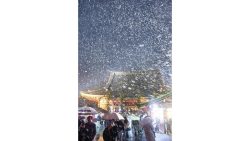
Tokyo, Yokohama Observe First Snowfall of Season; 1 Day Earlier than Average Year
JN ACCESS RANKING
-

As Chinese Tourists Shun Japan, Hotels and Stores Suffer
-

Osaka-Kansai Expo’s Economic Impact Estimated at ¥3.6 Trillion, Takes Actual Visitor Numbers into Account
-

Japan Govt Adopts Measures to Curb Mega Solar Power Plant Projects Amid Environmental Concerns
-

BOJ Gov. Ueda: Highly Likely Mechanism for Rising Wages, Prices Will Be Maintained
-

Economic Security Panels Debate Supply Chains, Rare Earths; Participants Emphasize Importance of Cooperation Among Allies




